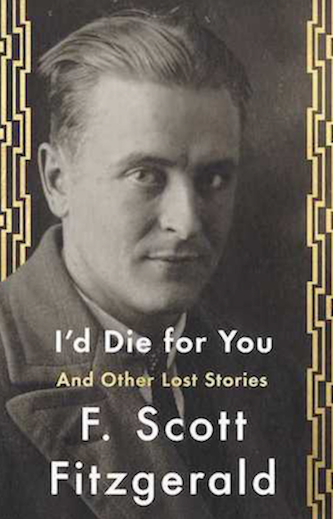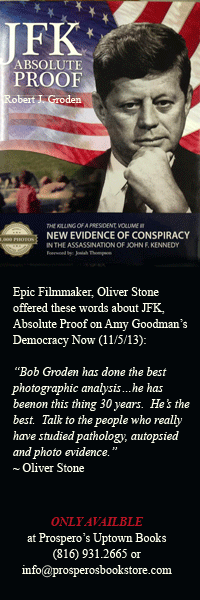 The publication of this collection of eighteen “lost” short stories represents a mile marker-if not a capstone-in the field of Fitzgerald scholarship.
The publication of this collection of eighteen “lost” short stories represents a mile marker-if not a capstone-in the field of Fitzgerald scholarship.
As I’ve said in a prior column, finding and publishing an undiscovered work by a literary great can lead to mixed results. Sometimes it’s a real find (“A Moveable Feast”, Ernest Hemingway’s memoir of his early years as a writer in Paris), and sometimes it’s a dud (“Islands in the Stream,” Hemingway’s bogus WWII fantasy, with himself as a hunter of Nazi subs in the Caribbean).
However, this book is so varied in the subject matter and style of its stories, that they encompass the best of all the different stages Fitzgerald went through as a writer. It’s all there-the young man from the Midwest, who conquers the East Coast world of status and grandeur; the voice of his generation, who came back from the First World War, determined to make up for lost time by riotous dissipation; and the stoic survivor of his last years, who battles back from artistic , personal, and financial disaster. (The latter all converged for Fitzgerald-and the country as a whole-in the terrible years of 1930, 1931, and 1932.)
All but one of these pieces were written after the national crisis of the Great Depression and Fitzgerald’s personal crisis of his wife Zelda’s nervous breakdown. This period was made all the more difficult by the charmed decade which had preceded it, when Fitzgerald had the Midas touch as an author, and which left him all the more ill prepared for the calamity which followed.
At times it helps to be an outsider to gain an understanding of a culture.
In trying to place these short stories in their proper perspective I turned to the Italian literary scholar, Sergio Perosa. In his 1961 “The Art of F. Scott Fitzgerald,” I found the following quotes, which seemed particularly appropriate:
“A setting bristling with motives and fictional possibilities, sketched with precision, which by its nature makes the adventures (of the characters), otherwise unbelievable, rather plausible.”
“He (Fitzgerald) attained and expressed ‘a wise and tragic sense of life’ and he was able to convey it to the reader by combining once more the innocence of complete involvement with an almost ‘scientific coolness of observation.” (Perosa quotes here Fitzgerald biographer, Arthur Mizener.)
“The present was poor in consolations but rich in warnings. The present was different, tragic and tormented. . . . . . There is no possibility of escape, except perhaps the staunch resistance of personal integrity.”
All these comments by Perosa about Fitzgerald’s short stories apply to this new collection.
These stories also go a long way towards rebutting two pieces of conventional wisdom about Fitzgerald as an author. One was that he wrote in a dated, Edwardian style, handed down from his predecessors Henry James and Edith Wharton. As these stories reveal, Fitzgerald’s later style was very much influenced by his writing for the movies and popular magazines like Esquire. These factors alone would ensure a shift in vocabulary, syntax, and structure from his earlier works.
The other rap was that he never got beyond his early fixation on young love among the privileged classes. A quick review of the settings of these stories shows that the author had immersed himself in very different worlds than the one which brought him to fame, i.e. “rich boys” and “flappers.”
These include the Civil War (based on actual Fitzgerald family history), relations between patients and doctors in mental hospitals, big time college athletics, and, most of all, the surreal fun house of Hollywood. (Fitzgerald had joined other major authors like John O’Hara and William Faulkner as a screen writer there, even working on ‘Gone with the Wind’!)
Even if you feel that Fitzgerald’s true achievement was to be found in his novels, these short stories are the test runs for the themes and styles which he brings to full fruition in the latter genre.
Much of the pleasure and understanding derived from this new collection is due to its editor, Anne Margaret Daniel, who teaches at The New School in New York.
Professor Daniel provides a generous and helpful introduction, placing the stories in their proper context in Fitzgerald’s overall literary career. She also gives a brief preface to each individual story; as well as a set of explanatory notes for each, conveniently but unobtrusively placed at the end of the book.
Daniel should get additional credit for the leg work she did in tracking down the manuscripts for these stories. She completed her detective work by figuring out when and where they were written. Finally, she explains why each was previously unpublished until now, 80 years after they were written. These explanations make for disheartening reading, but ironically we wouldn’t otherwise be having the fresh pleasure of seeing them for the first time, if it hadn’t been for the short sightedness of some long forgotten magazine editor or studio executive.
We as readers owe Professor Daniel a debt of gratitude for her unmatched enthusiasm and careful scholarship in putting together this collection.











Thank you for this wonderful synopsis, Dwight. Unfortunately, it would appear that Fitzgerald is becoming a quiet casualty of evolving reading lists at the high school (and collegiate) level. Perhaps Ms Daniels, and her exceptional work, can be a happy catalyst for a new round of readership.
+1